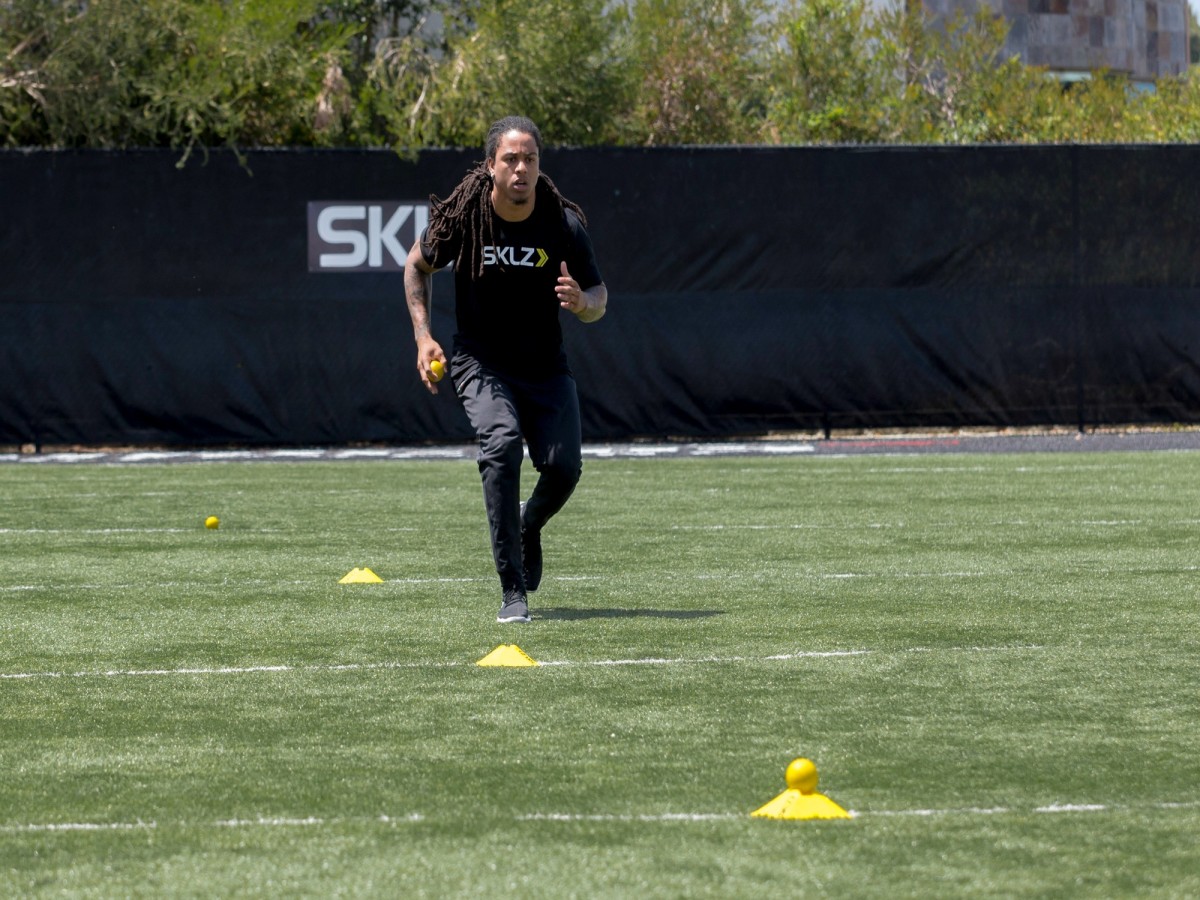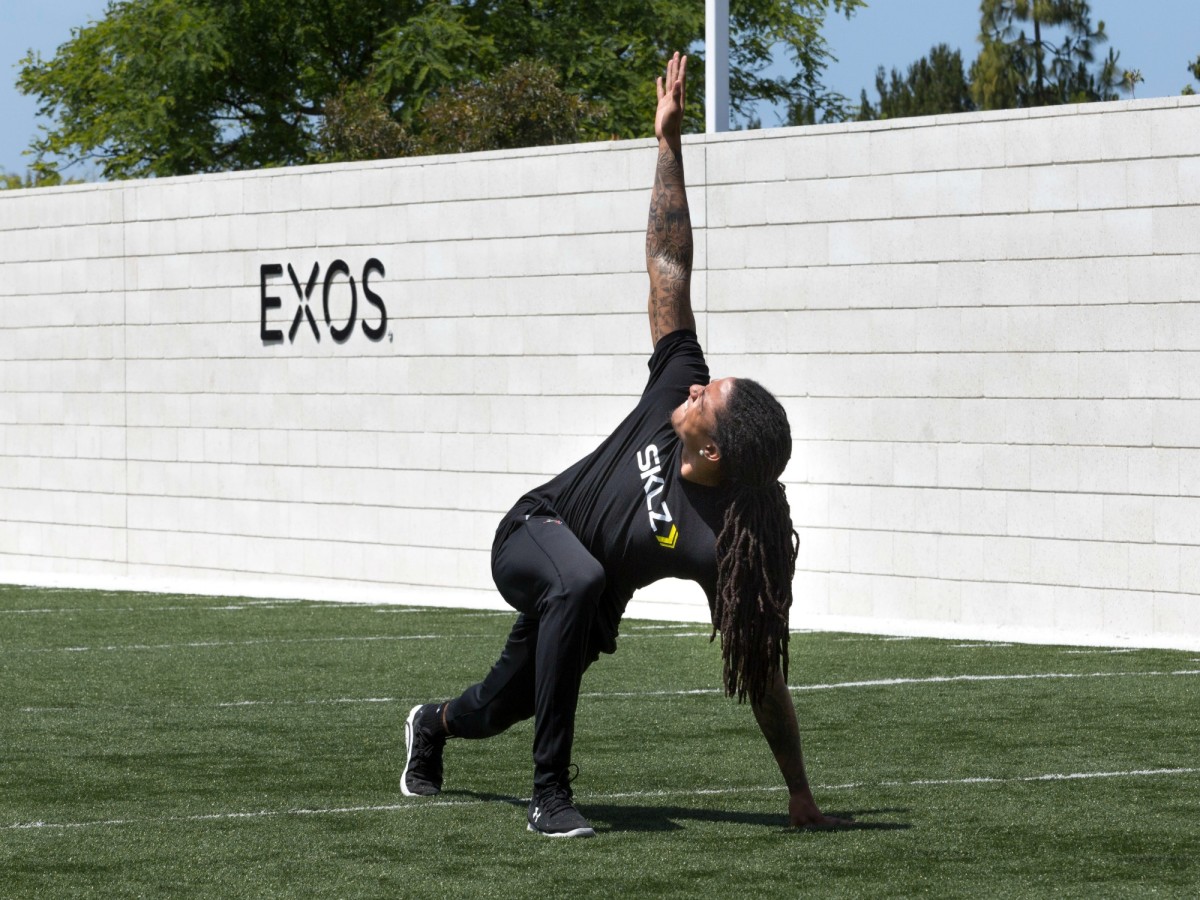How Chargers CB Jason Verrett trained his body for one-on-one battles with receivers

How did San Diego Chargers’ star Jason Verrett transform from the 25th-overall selection in the 2014 NFL draft to a Pro Bowl cornerback in just his second season? Hard work in the offseason and big plays on the field.
Even before being named a first round selection Verrett knew the secret to success in the NFL would be determined by how hard he worked in the offseason. Each year as he readies for training camp, Verrett returns to Carlsbad, Calif., to train at EXOS, refining his craft and challenging his body to adapt to new stresses, which play hand-in-hand with the game of football—especially the cornerback position.
How New York Jets RB Matt Forte withstands football's punishing hits
Roy Holmes, a performance specialist at EXOS, has worked with Verrett for the past two offseasons. A former defensive back from the University of Northern Arizona, Holmes recognized Verrett’s work ethic and potential to get him to the next level on the gridiron.
"If you look at him from a physical standpoint you'll say, just from the eye test, you might say, 'Oh, he kind of looks smaller than I thought he was,’” Holmes says. “But he by far, might be one of the more stronger guys that I've trained. He's extremely explosive."
At 5’10” and 191 pounds, Verrett’s size is often questioned when it comes to matchups with the likes of some of the AFC West’s bigger, more physical receivers. Against players such as the Broncos’ Demaryius Thomas or the Raiders’ Amari Cooper, Verrett’s aggressive style of play creates a tough match-up, while covering quick players such as Jeremy Maclin or Emmanuel Sanders can also be a challenge.

Verrett’s natural speed helps him manage those one-on-one battles, but his quickness is only one part of the puzzle.
“If you're not in the weight room on a consistent basis it's going to be hard to stay on the field,” Verrett says. “Because I mean these guys in the league, everybody's big and everybody's strong. You definitely got to take care of your body in the weight room and doing all the little things to strengthen your body.”
Last year Verrett proved he could hold his own against top competition. He was named the Chargers’ Defensive Player of the Year, leading the team with three interceptions and 12 passes defensed. The only knock on Verrett has been his ability to stay on the field. In his first two seasons, Verrett has played in just 20 games. To help prevent injuries, he’s packed on 10 pounds of muscle this offseason and he’s focused training for flexibility and explosiveness .
Georgia Tech and more college football teams add extra helmet protection
"My goal first off is to play 16 games. Studying film and being in the weight room are things that you know you have to do in order to be successful,” Verrett says. “The stretches, the massages and the eating habits is what's gonna ultimately determine how long I'm going to stay on the field. If I play a full 16, I think it's going to be a lot of good things for us."
Verrett’s workouts always start with the “world’s greatest stretch,” which targets your T-spine, hip flexors, glutes, hamstrings, calves and even your rotator cuff and its main goal is to improve stability, flexibility and mobility. (Learn how to do the stretch below.) His sessions include drills that focus on single-leg unilateral stability, injury prevention in the groin and hip muscles, acceleration and more. Many of the drills utilize ladders, hurdles, resistance bands and more—Verrett uses products from SKLZ, an EXOS performance brand.
Why hamstring injuries are so common in NFL players, during preseason training
Verrett is confident his offseason preparation will help him when he hits the field this fall, but he also hopes that the countless hours of work will lead to success that can trickle down to the next generation of aspiring cornerbacks.
Says Verrett: “My goal is to inspire other players, either younger players or players around my age group to do all the things that's right that's going to help you to be a good corner.”
How to do Verrett’s “world’s greatest stretch”

To properly perform the stretch, get into a forward lunge position with your lead leg bent at a 90-degree angle. Your hind leg should be straight, but slightly bent at the knee. Your hands should be on the ground, to set the starting position. Matching your lead leg, rotate your hips and reach upward toward the sky with your lead arm, then bring it back down. Repeat four times on each side.
